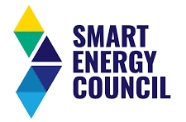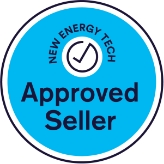As Fronius Service Partners, we have been privileged to work with Fronius over the last few months on Beta testing the new “zero export” and “export limitation” function of the Fronius Smart Meter. I just received confirmation from Fronius that they have finalized the Beta testing that they have been performing on our office inverter. The Fronius Smart Meter can now officially be used as an export limit device. Why would we want to limit export? There a few reasons.
A commercial application of export limit
With the rapid increase in solar, Energex’s infrastructure often cannot cope with the strain created by multiple solar systems injecting power back into their grid. For example, consider an industrial area that is heavily penetrated with large solar systems. On Sundays, when no-one in the area is using the power, an excessive amount of power would feed into the grid. This power is not only unwanted but potentially damaging to the local electricity network. It’s for this reason, on systems larger than 15kW, Energex usually requires us to install a device that will ensure the solar system will “ramp down” rather than export power back to the grid.
Why the Fronius export limit solution
Until now export limit devices have always been an expensive, sometimes clunky, and otherwise a useless add on. The Fronius smart meter solves all three problems. Originally designed for consumption monitoring and load shifting on the Solar Web platform, Smart Meter is not only significantly more affordable – but more versatile. I’ve explained the other benefits of the Fronius smart meter in this post.
A domestic application of export limit
One of Energex’s requirements, when we install solar, is that the customer’s cables are big enough to handle the power being sent back up the consumer mains. If the mains are too small to handle 5000 Watts of power, the inverter will need to inject a higher voltage. The voltage will need to be high enough to overcome the cables impedance. This is known as voltage rise. If the voltage needs to rise too high (by regulation 2.5 percent) the inverter’s internal overvoltage protection will turn the inverter off. As the inverter shuts down, the voltage will drop again, so the inverter will turn back on and repeat the process until solar production (or more importantly, solar export) is limited.
Three solutions to voltage rise
- The first is to do an expensive mains upgrade.
- The second is to install a smaller solar system.
- The third solution was cost-prohibitive until now: limiting the export of the solar so that the voltage will not rise above the stipulated 2.5 percent.
Why the Fronius Export limit solution
With the introduction of export limiting on Fronius smart meter, the solution has not only become cost effective, but it comes with important load control features. First, the Fronius smart meter will graph all consumption, production, and export (that information alone is an invaluable consumer educational tool). Second, the inverter uses the smart meter information to turn on appliances when export would otherwise have occurred. If the solution is carefully implemented, the export limit function would only then be used as a regulation backup. Solar production would then be maximized.
The Fronius Smart Meter has just got smarter. Fronius continues to live up to its promise of shifting the limits. I’m looking forward to seeing what Fronius comes up with next.
Fronius Export limitation confirmation
Mark Cavanagh









